Featured photo by Alix Dunn
Evergreens are an important part of residential landscapes. They offer year-round structure, winter interest, and habitat for winter birds and animals.
In the Northeastern US, we are fortunate to have a great variety of excellent native evergreens to choose from. Long before European settlers arrived, native evergreens — trees, shrubs, perennials, and groundcovers — populated Northeastern forests, open meadows, and rocky coastlines, supplying local wildlife with food and shelter through long, cold winters.
So, why are modern suburban landscapes in the Northeast dominated by non-native evergreens?

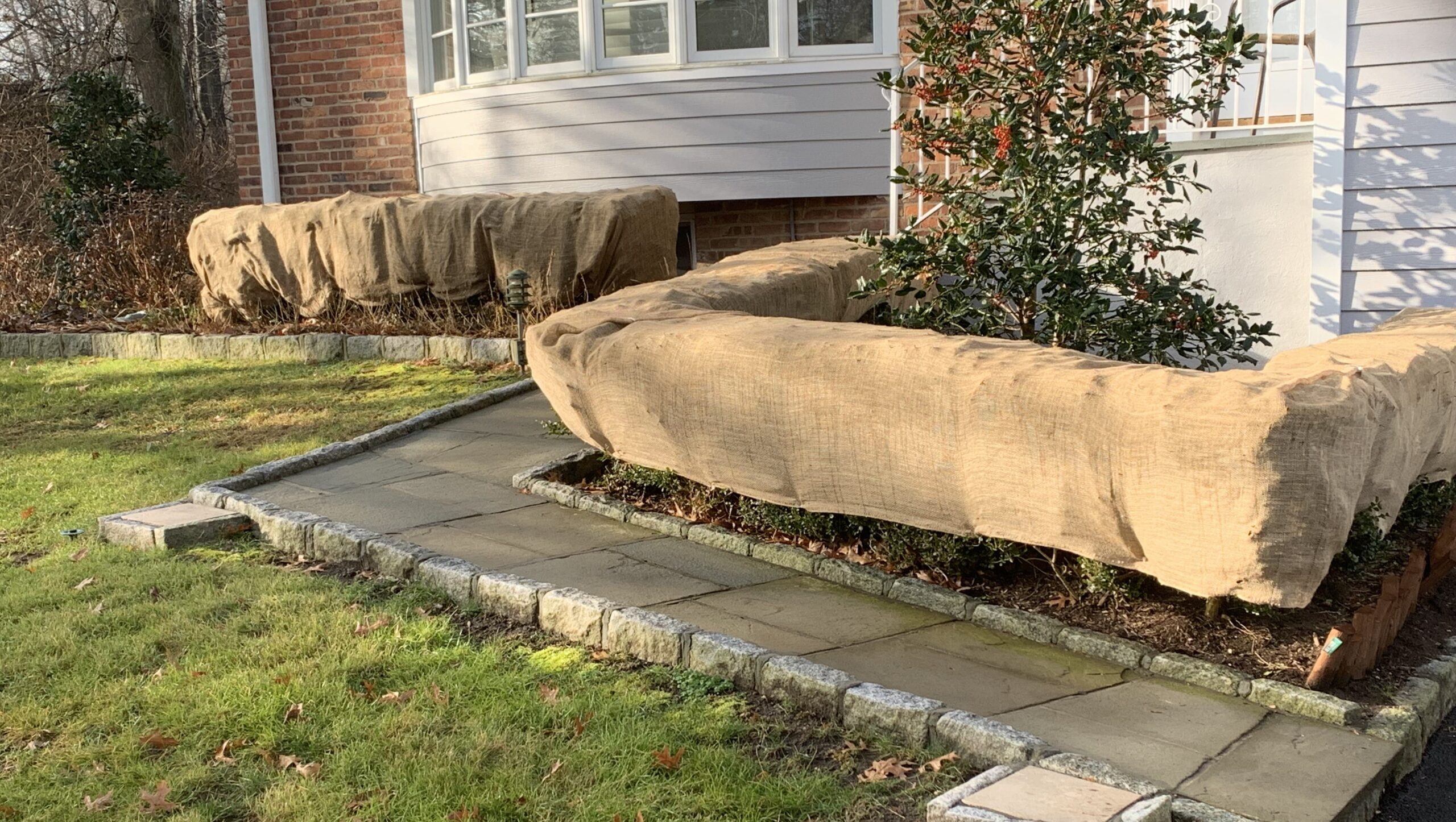
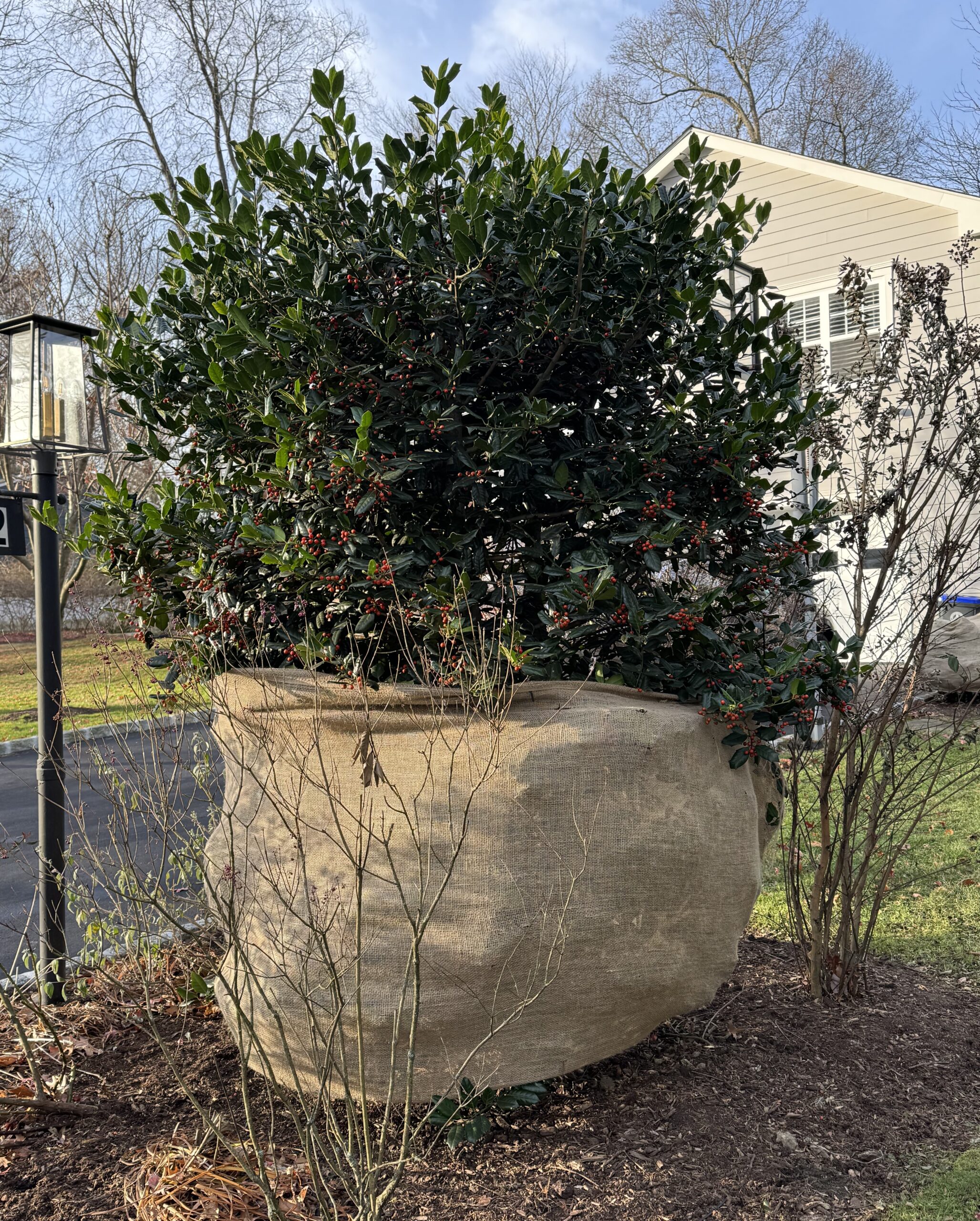
English and Asian boxwoods, European hollies, and many Asian azaleas need special winter protection from snow and ice, dry winds, and salt. These plants are not well-adapted to winters in the Northern parts of the US because they evolved on continents with milder winters and very different soil chemistry. So, if we plant these non-native plants, we are advised to wrap them in unattractive burlap bags all winter, or expect dead patches of winter-burn and salt damage in the spring.
Native junipers, on the other hand, need no coddling.
Creeping Juniper
Juniperus horizontalis or Creeping Juniper evolved growing on rocky, wind-swept cliffs from the Yukon Territory across Canada to Newfoundland and from Montana through New York and New England. It makes sense that a plant that evolved in the glacier-scarred North does not need to be swaddled in burlap to survive our modern winters! Yet, Creeping Juniper is so tough that today it also survives surrounded by asphalt in parking lots and traffic circles in Florida!
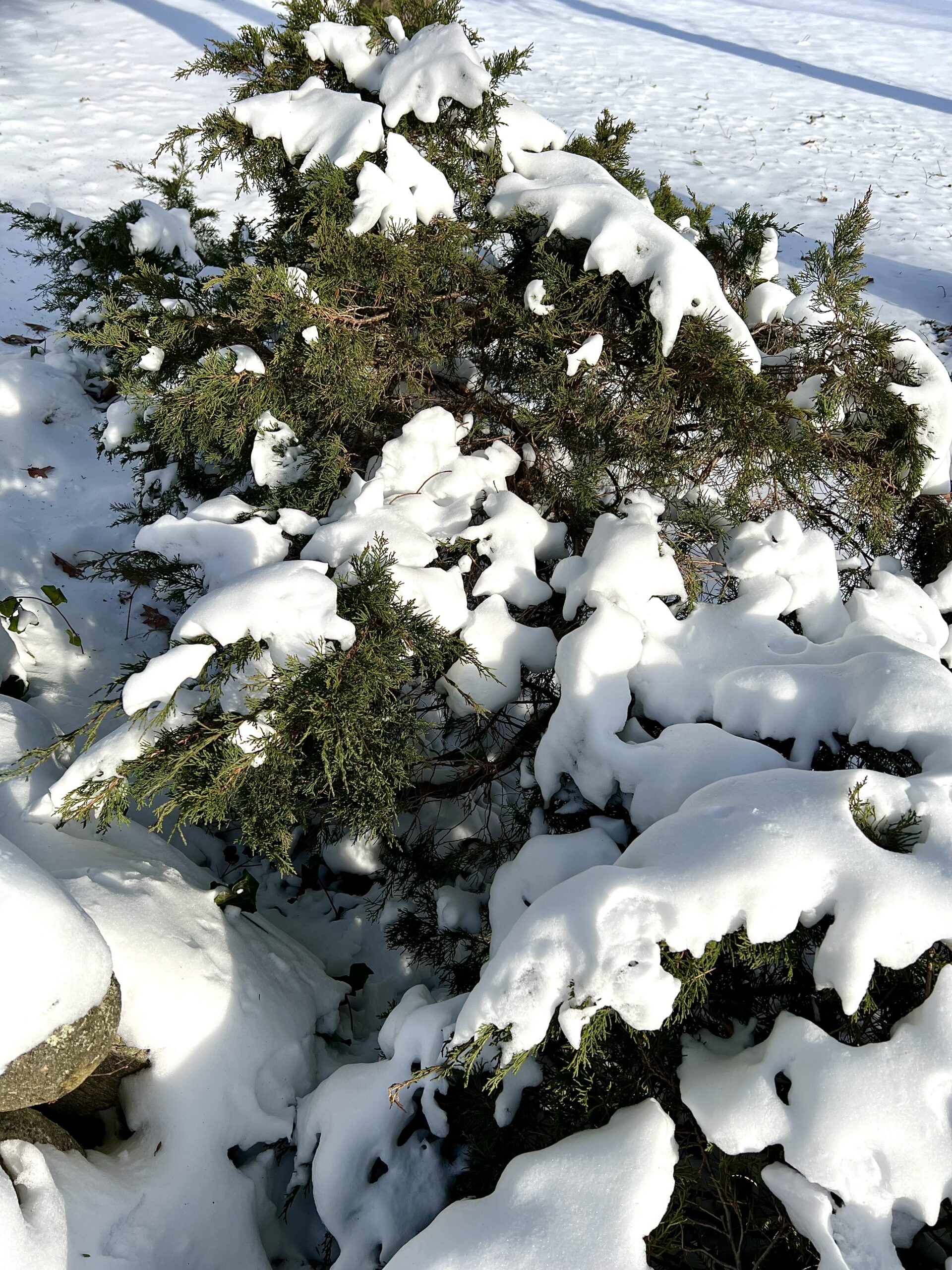
Creeping Juniper is a conifer that makes an outstanding evergreen groundcover in suburban landscapes. It grows close to the ground, typically staying under 18 inches in height but will gradually spread its long horizontal branches out 5 to 8 feet wide. Like most evergreens, it prefers full sun, but it is not at all fussy about soil, does not need fertilizer, and is extraordinarily drought tolerant. It is also salt-tolerant, and doesn’t mind being buried by snow, so it is a great choice for edging roadsides, driveways, and walkways. It also works well to stabilize slopes and prevent erosion.
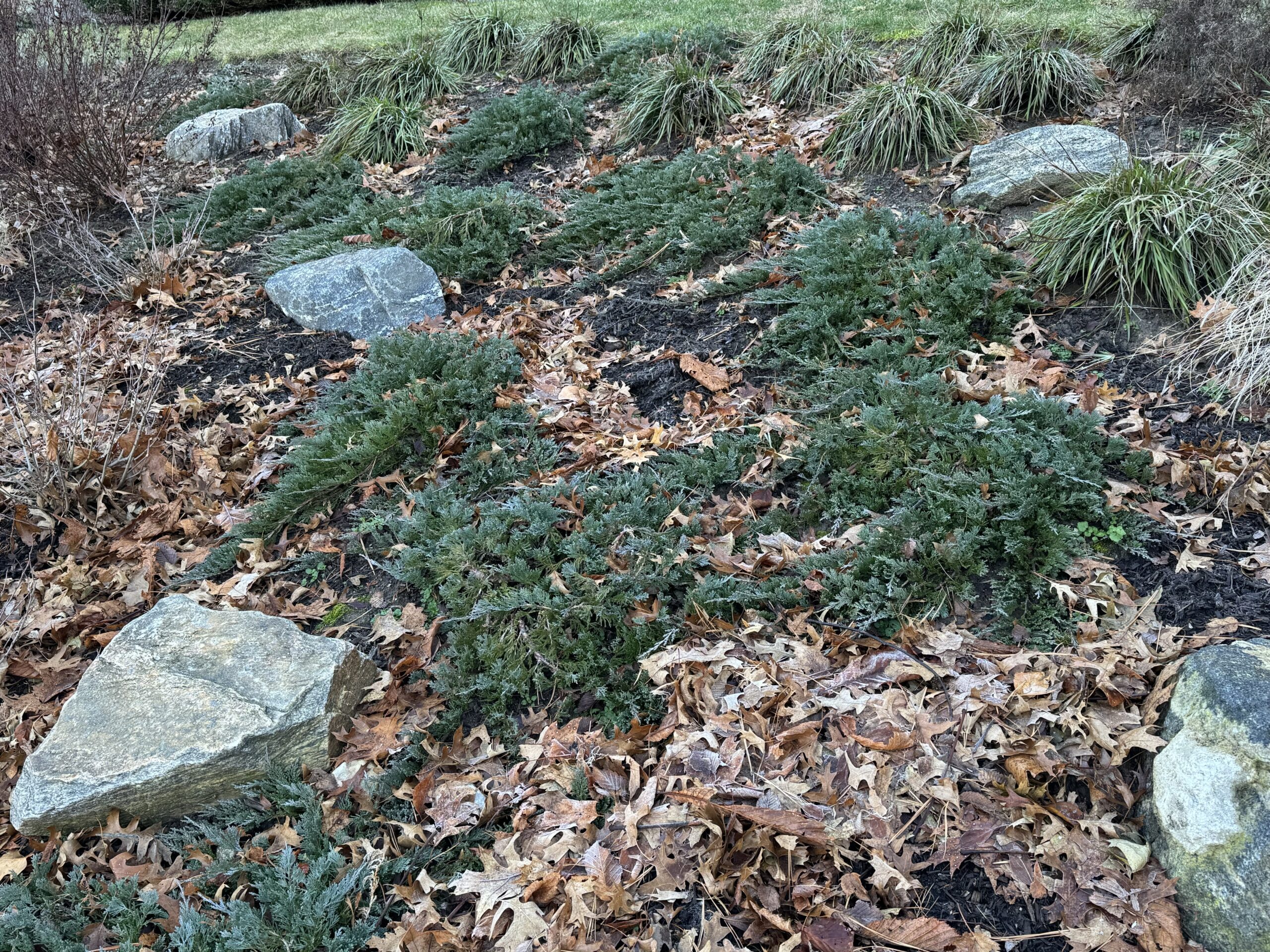
Deer, rabbits, and woodchucks usually ignore Creeping Juniper. Its aromatic foliage includes both scale-like leaves and spiky awl-shaped leaves that seem to discourage nibbling. But, much like the greatest American juniper, Eastern Red-cedar discussed in our last post here, the “berries,” which are really cones produced by female plants, are prized by native birds. Cedar waxwings, robins, blue jays, flickers, catbirds, and chipping sparrows all are attracted to the tasty berries.
Unfortunately, the junipers most commonly offered for sale in the nursery trade are not native to the US, but are from Asia. Juniperus chinensis, Juniperus japonica, and their many cultivars are neither more attractive than our native junipers, nor as hardy, and are definitely less appreciated by birds. Though birds will eat berries from the Asian species, studies have shown that native birds have a definite preference for native juniper berries.
So, look for shrubs labelled Juniperus horizontalis, Juniperus virginiana, or Juniperus communis (discussed below) as you shop for evergreens. There are loads of attractive cultivars of each of these native plants that are at least as appealing the cultivars of non-native junipers.
Juniperus horizontalis ‘Wiltonii’ (pictured above), often called ‘Blue Rug’ Juniper, stays very low at about 4 inches in height. It makes a great groundcover and looks fabulous draping over a garden wall. Juniperus horizontalis ‘Bar Harbor’ is fast-growing and stays low, but will spread up to 10 feet wide with blue-gray foliage that turns purplish in winter. ‘Gold Strike’ has light green to gold foliage and mounds up a bit taller. All of them are incredibly durable and care-free garden shrubs.
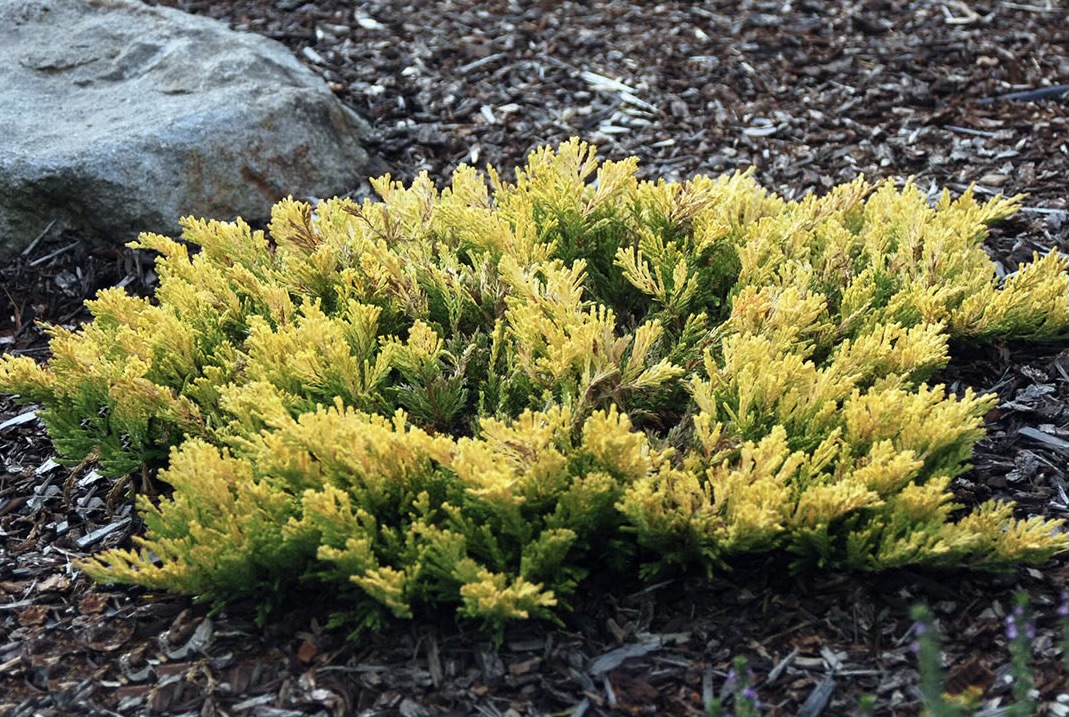
Common Juniper
And then there is the most wide-spread evergreen conifer in the world: Juniperus communis or Common Juniper. It is native not only to the Northeastern US, but throughout the Northern Hemisphere all around the planet! Its native habitats range from European coniferous forests and alpine open areas, to the northern parts of Eurasia, including Siberia and Mongolia, and even within the Arctic Circle. In the US, it is found from Alaska to New England and from the Rocky Mountains south to Arizona and across the country to Kentucky and the Carolinas.
Its form around the world varies from medium-sized trees up to 45 feet tall, to multi-stemmed shrubs 9 or 10 feet tall. In very tough conditions, on frozen rocky outcroppings, it appears as a prostrate, low-growing shrub. All of these forms can exist together in parts of the US.
Common Juniper is easy to distinguish from other junipers because its leaves are all the spiky awl-shaped type without any scaled needles.
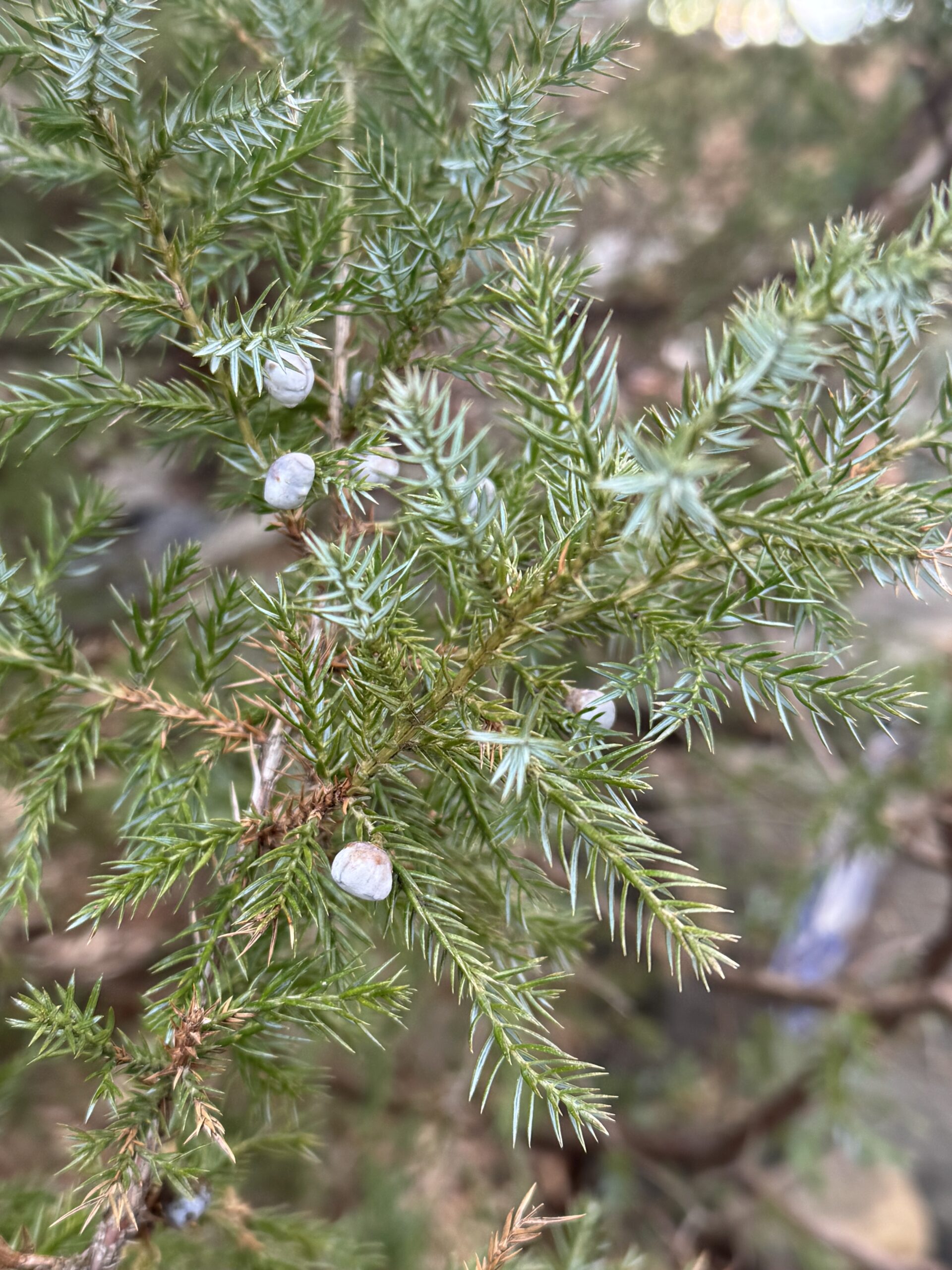
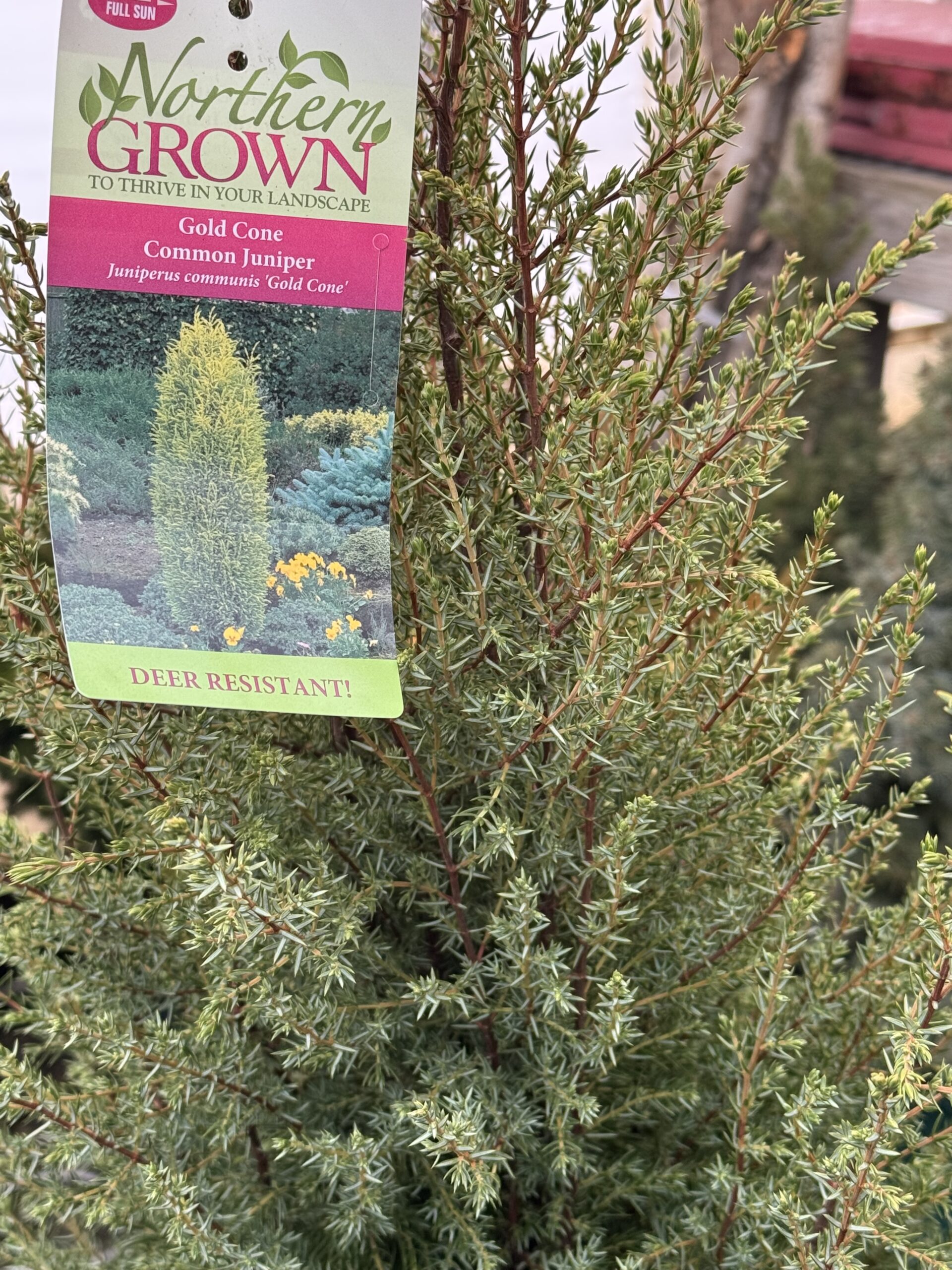
As with other junipers, Common Juniper has given rise to many ornamental cultivars, both in shrub and tree form. One of the most popular tree forms is ‘Compressa,’ also known as “Pencil Point Juniper” for its extremely narrow columnar shape. In the opposite direction is Juniperus communis var. depressa, a shrub form that grows 3 to 6 feet tall and up to 10 feet wide, also noted for its large berries attractive to wildlife.
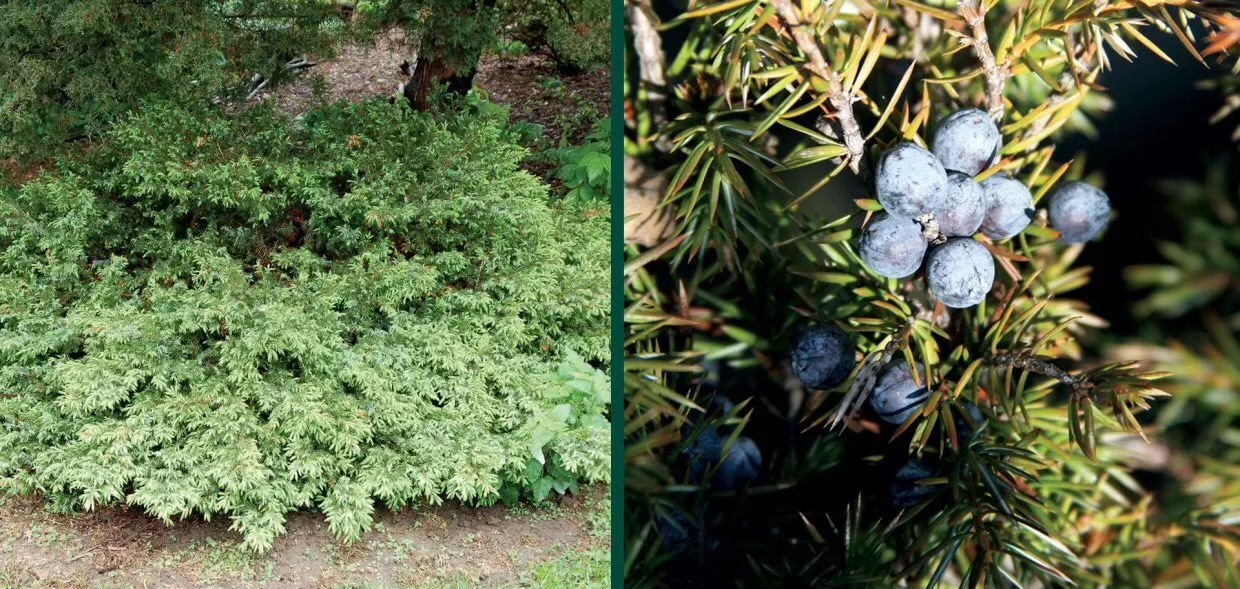
Given the world-wide presence of Common Juniper, it is not surprising that humans have found many uses for it over the centuries. Arguably the most successful and popular use of the berries is to flavor to gin. The words “gin” and “juniper” are both derived from the Dutch word “genever” or the French word “genievre” referring to the plant. The berries are also used to flavor roasts, especially game meats, and other foods. Eating large quantities of the berries directly is not advised as they can have a toxic effect. But the foliage, oil, bark, and berries of Common Juniper have been used around the world in medicines, soaps and fragrances, insect repellants, and in religious ceremonies.
Today, the greatest value of all 3 of our region’s native junipers, Juniperis virginiana, J. horizontalis, and J. communis, is as landscape plants that are beautiful, perfectly adapted to our climate and soil, and beneficial to birds and other wildlife as food and shelter. Consider replacing some of those fussy non-native shrubs (that you may have wrapped in burlap) with these indispensable native plants.

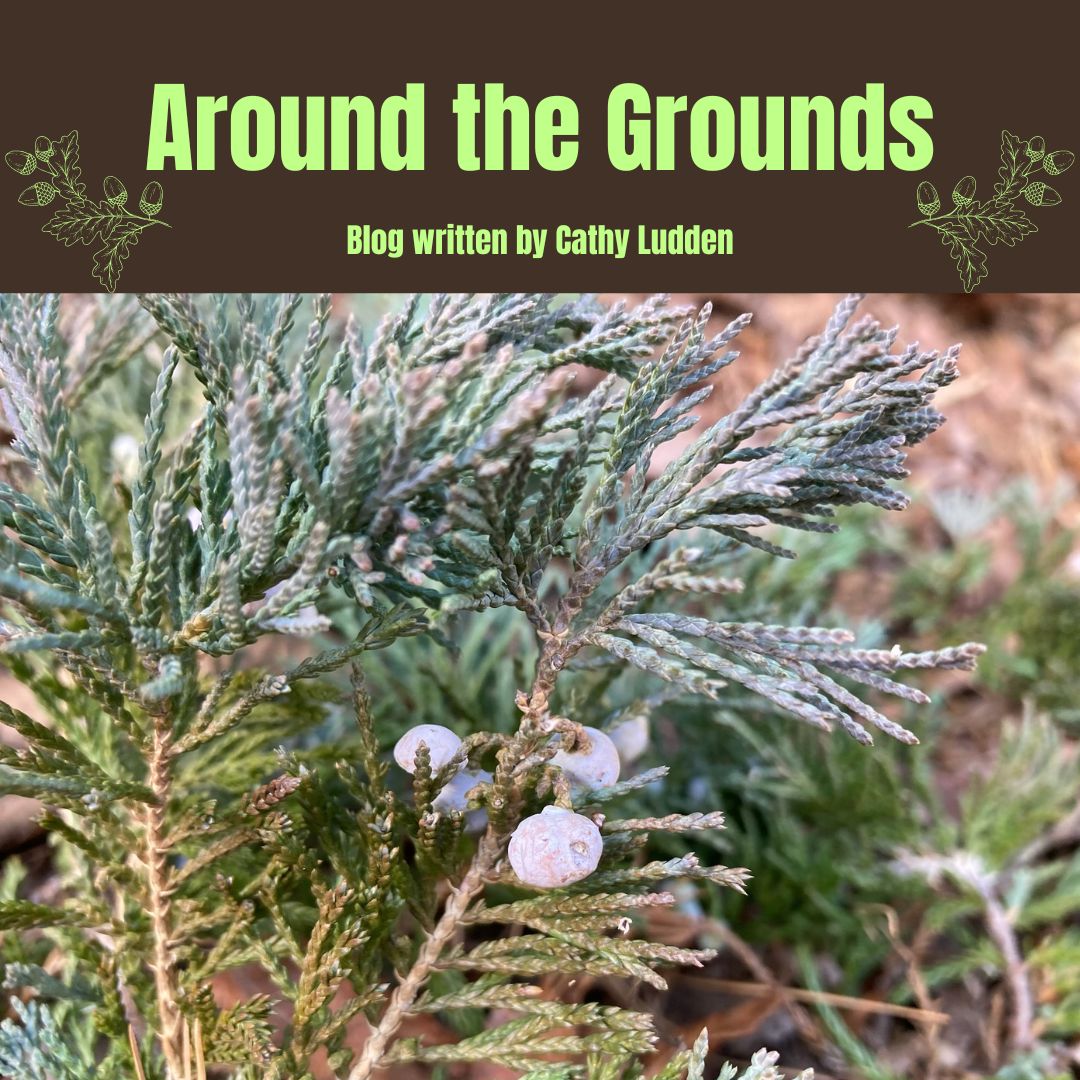
Great stuff! Thanks for sharing.
I have a little problem with identifying the junipers because of the way in which some have scale-like leaves (Juniperus horizontalis) and others have needle-like leaves (Juniperus communis). Or am I confused on this?